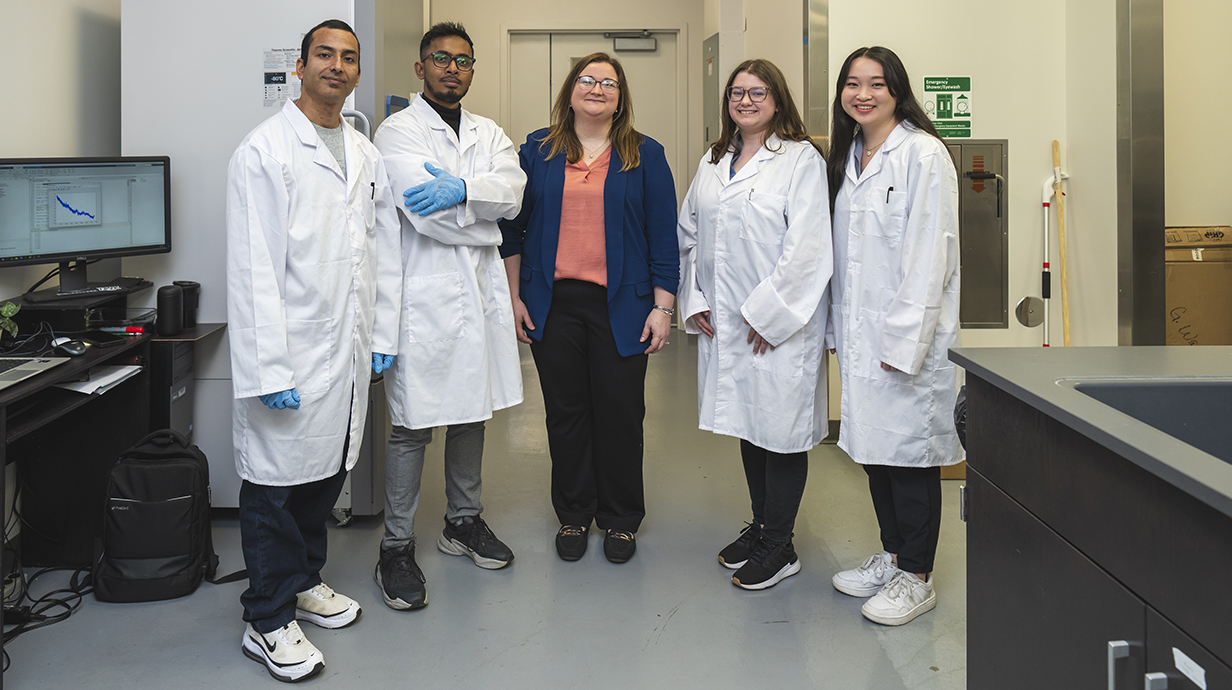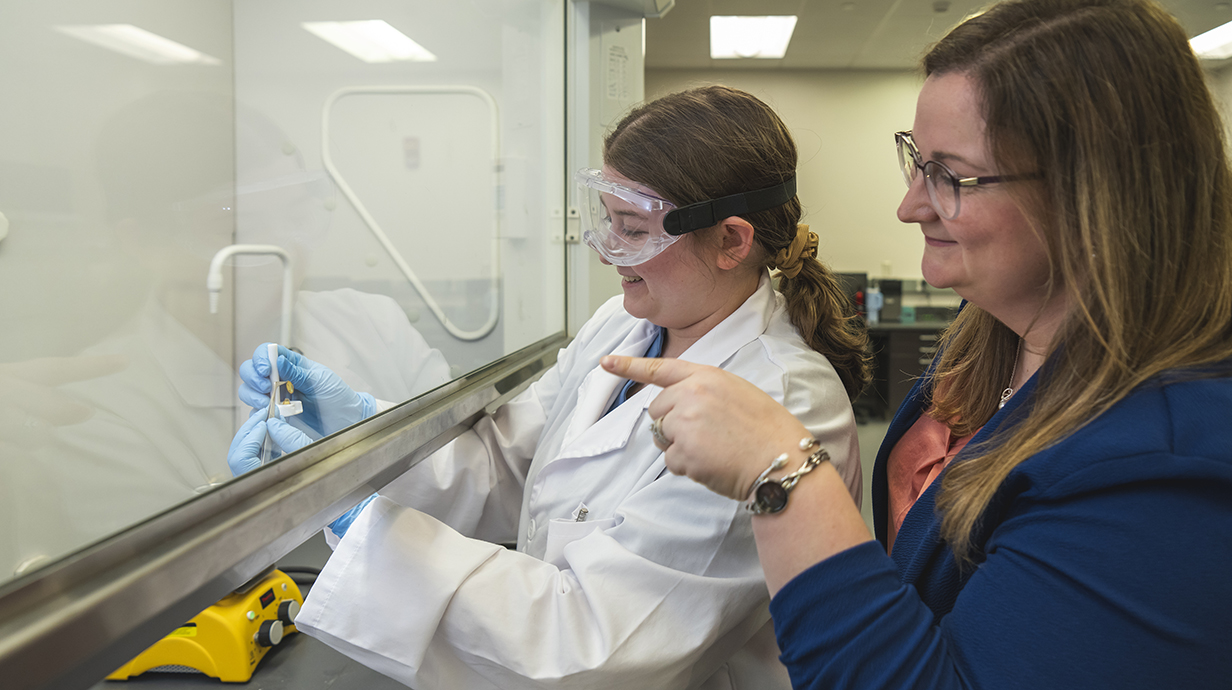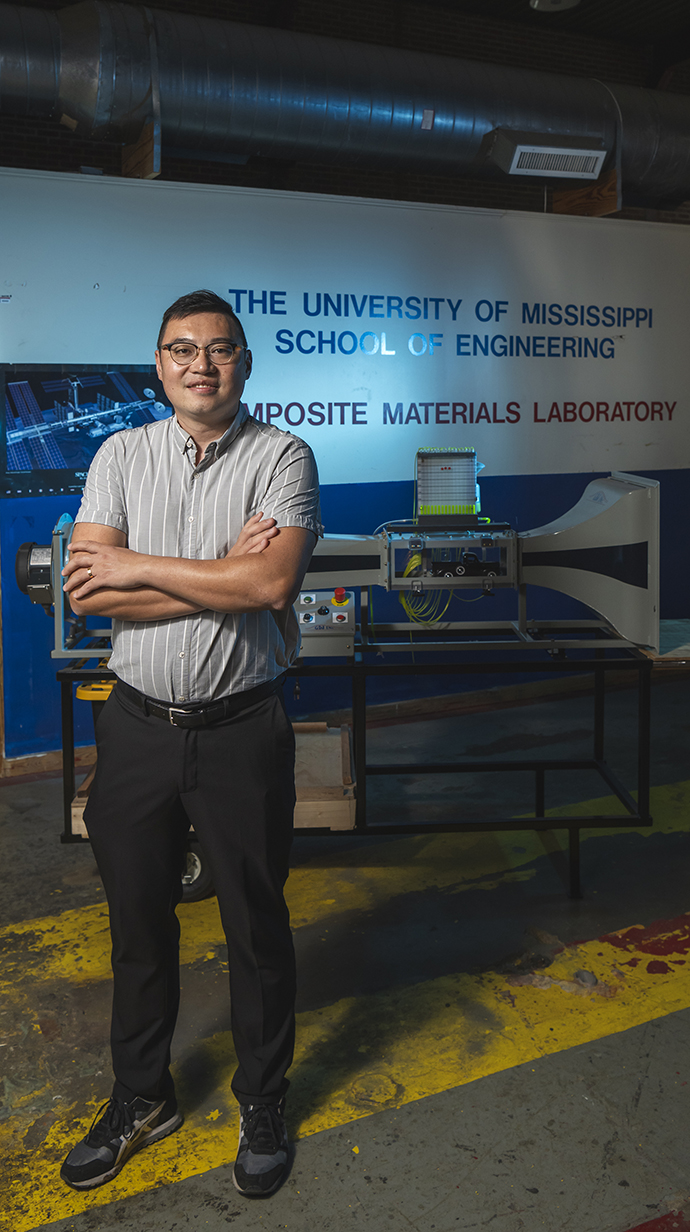Early Career Awards Boost Work in Drag Reduction, Cellular Mechanics
NSF-funded research could lay foundation for targeted medications, improved fuel economy

OXFORD, Miss. – The National Science Foundation has awarded its most prestigious early-career grant to two University of Mississippi researchers, recognizing their work in biomedical engineering and fluid dynamics.
Nikki Reinemann, associate professor of biomedical engineering, and Wen Wu, assistant professor of mechanical engineering, have received NSF Faculty Early Career Development Program grants, designed to identify and support young researchers. The grant marks Reinemann and Wu as potential national leaders and role models in their fields.
"Dr. Reinemann and Dr. Wu's awards highlight the groundbreaking research happening at the University of Mississippi," said John Higginbotham, vice chancellor for research and economic development. "Their work not only advances fundamental scientific understanding but also has the potential to create real-world solutions in medicine and engineering."
The Other Powerhouse of the Cell
Reinemann will use the five-year grant to study how the protein myosin II works in teams to help cells move and replicate. This research could build a foundation for more targeted medicine to treat cancer, neurological and muscular disorders, and other diseases.
"These molecules work together to cause cells to do what they do," she said. "Cells work together to form tissues; tissues work together to form organs and organs work together to form organisms.

Nikki Reinemann (right), associate professor of biomedical engineering, assists Ole Miss student Victoria Amari in her lab. Reinemann is one of two Ole Miss faculty members to receive a National Science Foundation Faculty Early Career Development Program grant this year. Photo by Srijita Chattopadhyay/Ole Miss Digital Imaging Services
"All of these things have to work together, but we don't have a clear understanding of how they do that. And it all starts at the bottom with the molecules of life."
Reinemann's work aims to demystify how and why myosin II responds to external stimuli.
"We're trying to understand how cells work and communicate from the molecular level up," she said. "We want to understand the details of what that communication is and how nature has engineered cell function.
"If we can unravel some of these molecular 'rules' that support life, maybe we can harness that knowledge to develop biomimetic materials or better understand mechanisms of disease that rely on these mechanical signals, like cancer metastasis."
By unlocking the mechanics of myosin II, Reinemann's work could have implications not just for disease treatment, but also for bioengineering materials that mimic these cellular processes.
As a part of the grant, Reinemann will also host a 10-week summer research experience program for nontraditional students, including students who are parents.
"Part of the goal of the NSF is to broaden participation in STEM, and I chose something I'm particularly passionate about," she said. "When I was a graduate student, I was a single parent trying to navigate the world of research by myself.
"I want to open opportunities for student parents to be able to participate in research experiences with structured mentorship so that they may see a path forward in a STEM career."
Rough Waters
Wu's research seeks to better understand how rough surfaces affect pulsating flows of liquid or air. His research could lead to more accurate estimates of drag, which could in turn affect multiple industries such as aviation, automotive and even environmental conservation.
"Let's say you want to optimize your car's aerodynamics or fuel efficiency," Wu said. "We base those estimates off your car going at constant speeds, for example, an average of 65 miles per hour.

Wen Wu, assistant professor of mechanical engineering, shows off the travel-sized wind tunnel that he will use to teach Mississippi high school students about flow dynamics. Photo by Srijita Chattopadhyay/Ole Miss Digital Imaging Services
"But when we are driving, even when we are on cruise control, the speed is always varying because the wind gust is always changing."
Estimating air or liquid flows based on fixed speeds has long been the standard method of calculating drag and lift. But if Wu can create a better formula to understand changing flows, those estimates will become much more accurate.
Having a clearer understanding of fluid flows in various conditions could help design more efficient gas and wind turbines, build stronger bridges and flood barriers, help reduce wind damage to crops and even support oyster reef restoration, Wu said.
"The oyster population is declining significantly, and as a vital part of the Mississippi economy for generations, it is crucial that we take swift and effective action," he said. "Currently, people cultivate baby oysters just to spread them over the reef where, hopefully, they can survive. But where they're going to attach and grow needs to be considered together with the currents."
"What is important is the local flow (of water) that carries the nutrients that are circulating around each of the shells during wave cycles. Selecting reef sites and deploying the baby oysters in areas where nutrients are going to stay for a longer period of time and have a higher concentration is critical for the successful restoration."
As a part of the grant, Wu will collaborate with the UM Museum to host an "Art of Fluid" exhibition, where visitors can learn about fluid dynamics through artistic flow visualizations of research findings, as well as on-site wind tunnel demonstrations. He will also establish a Mobile Fluid Exposition Program, where he will visit different high schools and students in north Mississippi to discuss fluid dynamics.
"This is all a part of getting students interested in STEM," Wu said. "Students often find STEM challenging because of the math involved, but if they can relate or if it's more hands-on, they can understand it more.
"This can expand the horizons of students and show them that there are huge opportunities in Mississippi."
This material is based on work supported by the National Science Foundation under grant nos. 2439729 and 2439750.
Top: Nikki Reinemann (center), associate professor of biomedical engineering, gathers with student members of her research team – (from left) Rupesh Kandel, Amzadul Hoque Chowdhury, Victoria Amari and Abigail Moeller – in her lab in the Thad Cochran Research Center. Reinemann is using her National Science Foundation Faculty Early Career Development Program grant to study how a protein called myosin II helps cells move and replicate. Photo by Srijita Chattopadhyay/Ole Miss Digital Imaging Services
By
Clara Turnage
Campus
Office, Department or Center
Published
February 19, 2025
